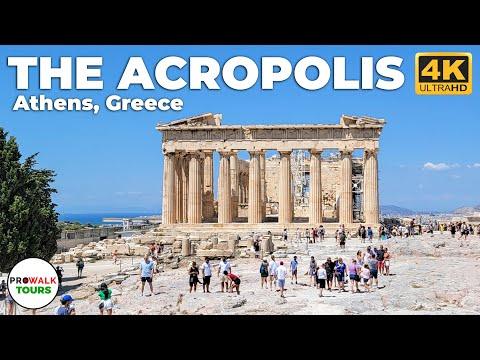I remember the first time I set foot in Athens. The city was alive with a rhythm that felt both ancient and vibrantly modern. My excitement was palpable as I embarked on a walking tour of one of the world’s most iconic historical sites: the Acropolis and the Parthenon. My journey began on a bright, sun-drenched morning, the sky a crisp, clear blue, setting the perfect backdrop for what was to come.
As I approached the base of the Acropolis, the grandeur of the ancient citadel began to take shape against the horizon. The Acropolis, meaning “high city” in Greek, was a sight to behold. Its imposing presence, perched on a rocky outcrop, was both awe-inspiring and humbling. The path leading up to it was a mosaic of worn stones, each step resonating with echoes of the countless feet that had tread the same path over millennia.
I followed the tour guide, a charmingly enthusiastic historian named Eleni, who seemed to have an endless well of knowledge about every corner of the Acropolis. She shared stories of the ancient Greeks with a flair that made history come alive. As we walked, Eleni pointed out various ruins and structures, each with its own tale to tell. Her passion for the subject was contagious, and I found myself captivated by the stories of gods and heroes, of triumphs and tragedies.
The first significant stop was the Odeon of Herodes Atticus, an ancient theater that once hosted dramatic performances and musical contests. Standing before the partially restored structure, I marveled at its scale and the ingenuity required to build such an amphitheater in ancient times. Eleni explained how the theater could seat thousands of spectators and how its acoustics were so finely tuned that even the smallest whisper could be heard from the furthest seat. As I imagined the once-thriving performances that must have taken place there, I felt a profound connection to the past.
Next, we ascended to the Parthenon, the crowning jewel of the Acropolis. The Parthenon, dedicated to the goddess Athena, was a temple of breathtaking beauty and architectural brilliance. Even in its current state, with some parts under reconstruction and others weathered by time, the Parthenon commanded respect and admiration. Eleni pointed out the intricate details of the friezes and the columns, explaining the symbolism behind the reliefs and the significance of the temple’s design. The precision and artistry of the ancient architects were astonishing.
Standing amidst the ruins of the Parthenon, I felt as though I was standing at the very heart of ancient Athens. The temple’s white marble, though weathered, gleamed under the sunlight, casting long shadows that danced across the marble floor. I could almost hear the whispers of ancient priests and the footsteps of pilgrims who once visited this sacred site. Eleni described the ceremonies held in honor of Athena, and I imagined the vibrant processions and celebrations that must have once filled the air with joy and reverence.
As we continued our tour, Eleni led us to the Erechtheion, another fascinating structure on the Acropolis. Unlike the Parthenon, the Erechtheion was not a single, grand temple but rather a complex of smaller rooms and altars. It was renowned for its unique asymmetrical design, which was a response to the uneven terrain of the Acropolis. The most striking feature of the Erechtheion was the Caryatids, the statues of maidens that served as columns on the porch. Each Caryatid stood with grace and poise, and their presence seemed to embody the spirit of the ancient city.
The history of the Erechtheion was equally captivating. Eleni recounted the legends associated with the site, including the mythological contest between Athena and Poseidon for the city’s patronage. According to the myth, Athena won the favor of the people by gifting them the olive tree, a symbol of peace and prosperity. The Erechtheion was built to honor both Athena and Poseidon, reflecting the city’s deep connection to these deities.
The final stop on our tour was the Temple of Athena Nike, a small but elegant temple dedicated to the goddess of victory. Perched on a bastion overlooking the Athenian Acropolis, the Temple of Athena Nike offered stunning views of the surrounding city. The temple’s compact size belied its grandeur, with its ornate friezes and delicate proportions making it a masterpiece of classical architecture. As I stood there, I couldn’t help but admire the harmony and beauty of the structure, which seemed to encapsulate the essence of Athenian victory and achievement.
As the tour came to a close, I found myself reflecting on the immense cultural and historical significance of the Acropolis and its monuments. The experience was more than just a walk through ancient ruins; it was a journey into the heart of a civilization that had profoundly shaped the world. The stories, the architecture, and the sheer scale of the Acropolis were a testament to the ingenuity and spirit of ancient Greece.
Leaving the Acropolis, I felt a deep sense of gratitude for having witnessed such an extraordinary part of human history. The Parthenon, the Erechtheion, and the Temple of Athena Nike were not just relics of the past but living symbols of a rich cultural heritage that continues to inspire and captivate people from around the world. The walking tour had been a remarkable adventure, one that I would cherish and remember for years to come.
